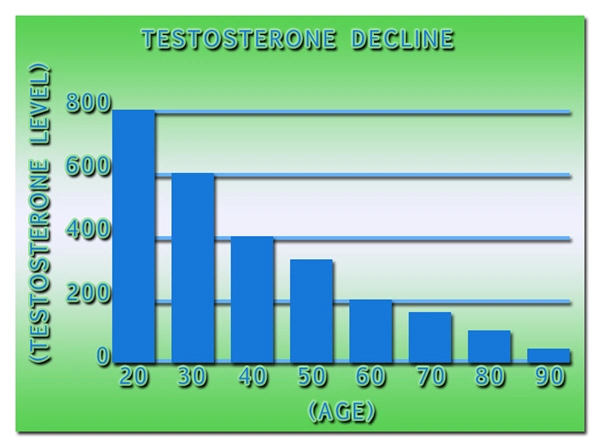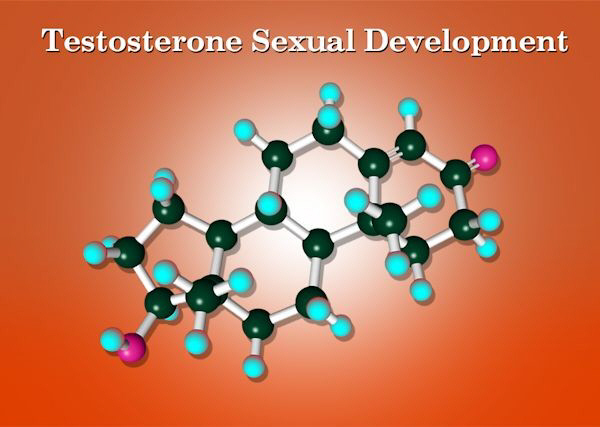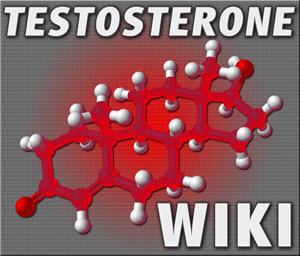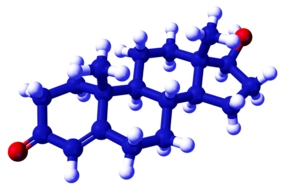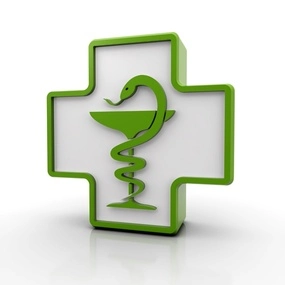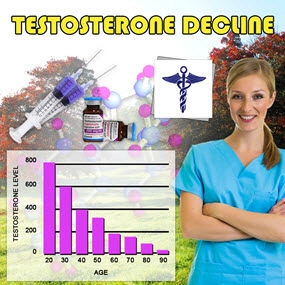Introduction to Androgel
Androgel, a popular testosterone replacement therapy (TRT) gel, has been widely used by American men to combat the effects of low testosterone levels. This topical gel, applied daily to the skin, helps to restore testosterone to normal levels, thereby improving symptoms such as decreased libido, fatigue, and mood swings. However, as with any medication, it is crucial for users to be aware of potential side effects, one of which includes the risk of developing blood clots.
Understanding Blood Clots
Blood clots, or thrombi, are gel-like masses that form in the blood when it thickens. While clotting is a normal bodily response to injury, helping to prevent excessive bleeding, clots can become dangerous if they form inappropriately. When a clot forms in a vein, it can lead to conditions such as deep vein thrombosis (DVT) or, if it travels to the lungs, a pulmonary embolism (PE), both of which can be life-threatening.
The Link Between Androgel and Blood Clots
Recent studies have suggested a potential link between testosterone therapy, including Androgel, and an increased risk of blood clots. The mechanism behind this association is not fully understood, but it is believed that testosterone may influence blood clotting factors, thereby increasing the likelihood of clot formation. It is important to note that while the risk is present, it is relatively low, and not all men using Androgel will develop blood clots.
Who Is at Higher Risk?
Certain factors can increase the risk of developing blood clots while using Androgel. Men with a history of blood clots, those with a family history of clotting disorders, and individuals with conditions such as obesity, smoking, or prolonged immobility are at a higher risk. Additionally, older men and those with underlying health conditions such as heart disease or cancer may also be more susceptible.
Symptoms to Watch For
It is essential for men using Androgel to be vigilant about the symptoms of blood clots. Signs of DVT may include swelling, pain, or tenderness in one leg, often accompanied by warmth and redness of the skin. Symptoms of a pulmonary embolism can be more severe and include sudden shortness of breath, chest pain that worsens with breathing, a rapid heart rate, and coughing up blood. If any of these symptoms occur, it is crucial to seek immediate medical attention.
Mitigating the Risks
To minimize the risk of blood clots while using Androgel, men should follow their healthcare provider's guidance closely. Regular monitoring of testosterone levels and overall health is essential. Additionally, maintaining a healthy lifestyle, including regular exercise, a balanced diet, and avoiding smoking, can help reduce the risk of clot formation. Men should also discuss any concerns or symptoms with their healthcare provider promptly.
Conclusion
While Androgel can be an effective treatment for low testosterone, it is important for American men to be aware of the potential risk of blood clots. By understanding the symptoms, knowing the risk factors, and taking proactive steps to mitigate these risks, men can use Androgel safely and effectively. As always, open communication with healthcare providers is key to ensuring the best possible outcomes.
Contact Us Today For A Free Consultation

- Androgel: Enhancing Cognitive Function in American Men with Low Testosterone [Last Updated On: March 18th, 2025] [Originally Added On: March 18th, 2025]
- Androgel Therapy: Dispelling Myths and Enhancing Men's Health with Testosterone Replacement [Last Updated On: March 19th, 2025] [Originally Added On: March 19th, 2025]
- Androgel's Impact on Mood and Emotional Well-being in American Men [Last Updated On: March 19th, 2025] [Originally Added On: March 19th, 2025]
- Androgel's Impact on Skin Health and Aesthetics in American Men [Last Updated On: March 20th, 2025] [Originally Added On: March 20th, 2025]
- Economic Impact of Androgel: Costs, Coverage, and Long-Term Considerations in TRT [Last Updated On: March 20th, 2025] [Originally Added On: March 20th, 2025]
- Androgel: Enhancing Immune Health in American Men with Testosterone Therapy [Last Updated On: March 21st, 2025] [Originally Added On: March 21st, 2025]
- Androgel: A Promising Therapy for Chronic Pain in American Men with Low Testosterone [Last Updated On: March 21st, 2025] [Originally Added On: March 21st, 2025]
- Androgel: Enhancing Sleep Quality in American Men through Testosterone Therapy [Last Updated On: March 21st, 2025] [Originally Added On: March 21st, 2025]
- Androgel: Enhancing Life Quality for American Men with HIV/AIDS Through Testosterone Therapy [Last Updated On: March 21st, 2025] [Originally Added On: March 21st, 2025]
- Androgel: A Promising Treatment for Male Infertility in American Men [Last Updated On: March 21st, 2025] [Originally Added On: March 21st, 2025]
- Androgel: Benefits for Low Testosterone vs. Prostate Health Risks in American Men [Last Updated On: March 21st, 2025] [Originally Added On: March 21st, 2025]
- Androgel: Enhancing Vitality in Aging American Men Through Testosterone Therapy [Last Updated On: March 22nd, 2025] [Originally Added On: March 22nd, 2025]
- Androgel: Enhancing Weight Management Through Testosterone Therapy in American Men [Last Updated On: March 22nd, 2025] [Originally Added On: March 22nd, 2025]
- Maximizing Androgel Therapy: Diet, Exercise, Sleep, and Stress Management for American Men [Last Updated On: March 22nd, 2025] [Originally Added On: March 22nd, 2025]
- Androgel Use and Hearing Loss: Investigating the Potential Link in American Men [Last Updated On: March 22nd, 2025] [Originally Added On: March 22nd, 2025]
- Androgel: A Promising Treatment for Chronic Fatigue Syndrome in American Men [Last Updated On: March 23rd, 2025] [Originally Added On: March 23rd, 2025]
- Androgel Benefits and Hair Loss Risks: Management and Monitoring Strategies for Men [Last Updated On: March 23rd, 2025] [Originally Added On: March 23rd, 2025]
- Androgel Therapy: Balancing Benefits and Cardiovascular Risks in American Men [Last Updated On: March 23rd, 2025] [Originally Added On: March 23rd, 2025]
- Androgel in Sports Medicine: Enhancing Recovery and Bone Health in American Men [Last Updated On: March 24th, 2025] [Originally Added On: March 24th, 2025]
- Androgel: Benefits, Liver Risks, and Monitoring for American Men [Last Updated On: March 24th, 2025] [Originally Added On: March 24th, 2025]
- Androgel's Role in Managing Fibromyalgia Symptoms in American Men [Last Updated On: March 24th, 2025] [Originally Added On: March 24th, 2025]
- Androgel: Enhancing Respiratory Health in American Men with Asthma [Last Updated On: March 24th, 2025] [Originally Added On: March 24th, 2025]
- Androgel: A Vital Ally for American Men Facing Chemotherapy-Induced Hypogonadism [Last Updated On: March 24th, 2025] [Originally Added On: March 24th, 2025]
- Androgel Use and Hypertension: Monitoring and Management Strategies for Men [Last Updated On: March 25th, 2025] [Originally Added On: March 25th, 2025]
- Androgel: A Dual Benefit for American Men with Gout and Low Testosterone [Last Updated On: March 25th, 2025] [Originally Added On: March 25th, 2025]
- Androgel Use in Men: Impacts on Oral Health and Hygiene Practices [Last Updated On: March 25th, 2025] [Originally Added On: March 25th, 2025]
- Androgel's Potential Benefits on Digestive Health in American Men Explored [Last Updated On: March 25th, 2025] [Originally Added On: March 25th, 2025]
- Androgel: Boosting Testosterone to Combat Obesity in American Men [Last Updated On: March 25th, 2025] [Originally Added On: March 25th, 2025]
- Androgel: Enhancing Sleep and Testosterone in American Men [Last Updated On: March 25th, 2025] [Originally Added On: March 25th, 2025]
- Androgel: A Promising Solution for Arthritis Pain in American Men [Last Updated On: March 25th, 2025] [Originally Added On: March 25th, 2025]
- Androgel Enhances Post-Surgical Recovery in American Men: Benefits and Considerations [Last Updated On: March 25th, 2025] [Originally Added On: March 25th, 2025]
- Androgel: Exploring Its Role in Eye Disease Prevention and Treatment [Last Updated On: March 26th, 2025] [Originally Added On: March 26th, 2025]
- Androgel: Enhancing Autoimmune Disorder Management in American Men with Testosterone Therapy [Last Updated On: March 26th, 2025] [Originally Added On: March 26th, 2025]
- Androgel: Potential Benefits for Seasonal Allergies in American Men [Last Updated On: March 26th, 2025] [Originally Added On: March 26th, 2025]
- Androgel: Exploring Its Potential in Treating Migraines in American Men [Last Updated On: March 26th, 2025] [Originally Added On: March 26th, 2025]
- Androgel's Impact on Kidney Function: Risks and Monitoring for American Men [Last Updated On: March 26th, 2025] [Originally Added On: March 26th, 2025]
- Androgel: A Novel Approach to Enhancing Focus in Men with ADHD [Last Updated On: March 26th, 2025] [Originally Added On: March 26th, 2025]
- Androgel Therapy: Managing Diabetes and Testosterone in American Men [Last Updated On: March 27th, 2025] [Originally Added On: March 27th, 2025]
- Androgel Use and Its Effects on Thyroid Function in American Men [Last Updated On: March 27th, 2025] [Originally Added On: March 27th, 2025]
- Androgel's Potential in Managing CKD and Low Testosterone in American Men [Last Updated On: March 27th, 2025] [Originally Added On: March 27th, 2025]
- Androgel Use in American Men with Low Testosterone and Crohn's Disease: Management Strategies [Last Updated On: March 27th, 2025] [Originally Added On: March 27th, 2025]
- Androgel: Exploring Its Potential in Managing Anxiety Among American Men [Last Updated On: March 28th, 2025] [Originally Added On: March 28th, 2025]
- Androgel: A Novel Treatment for Chronic Sinusitis in American Men [Last Updated On: March 28th, 2025] [Originally Added On: March 28th, 2025]
- Androgel Use and Skin Cancer Risk: Understanding and Mitigation Strategies [Last Updated On: March 28th, 2025] [Originally Added On: March 28th, 2025]
- Androgel's Potential Benefits for American Men with Epilepsy: A Comprehensive Overview [Last Updated On: March 28th, 2025] [Originally Added On: March 28th, 2025]
- Androgel's Role in Managing Multiple Sclerosis Symptoms in American Men [Last Updated On: March 28th, 2025] [Originally Added On: March 28th, 2025]
- Androgel's Potential in Managing Parkinson’s Progression in American Men: A Review [Last Updated On: March 28th, 2025] [Originally Added On: March 28th, 2025]
- Androgel's Role in Enhancing Stroke Recovery for American Men: A Comprehensive Overview [Last Updated On: March 29th, 2025] [Originally Added On: March 29th, 2025]
- Androgel: Enhancing Respiratory Health in American Men with COPD [Last Updated On: March 29th, 2025] [Originally Added On: March 29th, 2025]
- Androgel's Potential Benefits for American Men with ALS: A Comprehensive Overview [Last Updated On: March 30th, 2025] [Originally Added On: March 30th, 2025]
- Androgel's Potential in Managing Lupus Symptoms for American Men: A Promising Approach [Last Updated On: April 2nd, 2025] [Originally Added On: April 2nd, 2025]
- Androgel: A Promising New Approach to Managing Ulcerative Colitis in American Men [Last Updated On: April 2nd, 2025] [Originally Added On: April 2nd, 2025]
- Androgel's Potential Benefits for American Men with Rheumatoid Arthritis [Last Updated On: April 3rd, 2025] [Originally Added On: April 3rd, 2025]
- Androgel's Potential in Managing Scleroderma Symptoms in American Men [Last Updated On: April 4th, 2025] [Originally Added On: April 4th, 2025]
- Androgel Therapy in Men with Celiac Disease: Challenges and Management Strategies [Last Updated On: April 6th, 2025] [Originally Added On: April 6th, 2025]
- Androgel: A Promising New Treatment for Rosacea in American Men [Last Updated On: April 6th, 2025] [Originally Added On: April 6th, 2025]
- Androgel: A Promising New Treatment for Eczema in American Men [Last Updated On: April 8th, 2025] [Originally Added On: April 8th, 2025]
- Androgel's Impact on American Men's Heart Attack Recovery: Benefits and Risks [Last Updated On: April 8th, 2025] [Originally Added On: April 8th, 2025]
- Androgel: A Promising Treatment for Psoriasis in American Men [Last Updated On: April 9th, 2025] [Originally Added On: April 9th, 2025]
- Androgel Use and Acne: Causes, Management, and Prevention Strategies for American Men [Last Updated On: April 9th, 2025] [Originally Added On: April 9th, 2025]
- Androgel's Role in Hair Regrowth for American Men with Alopecia: Benefits and Risks [Last Updated On: April 10th, 2025] [Originally Added On: April 10th, 2025]
- Androgel Use and Shingles Management in American Men: A Comprehensive Guide [Last Updated On: April 10th, 2025] [Originally Added On: April 10th, 2025]
- Androgel's Potential in Managing Herpes Outbreaks in American Men [Last Updated On: April 11th, 2025] [Originally Added On: April 11th, 2025]
- Androgel's Potential in Treating Vitiligo: Insights for American Men [Last Updated On: April 11th, 2025] [Originally Added On: April 11th, 2025]
- Androgel Enhances Recovery and Quality of Life in American Men with Burns [Last Updated On: April 12th, 2025] [Originally Added On: April 12th, 2025]
- Androgel's Role in Enhancing HIV Symptom Management in American Men [Last Updated On: April 15th, 2025] [Originally Added On: April 15th, 2025]
- Androgel's Potential Role in Enhancing Ebola Treatment for American Men [Last Updated On: April 16th, 2025] [Originally Added On: April 16th, 2025]
- Androgel's Role in Managing Zika Virus Symptoms in American Men: A Comprehensive Overview [Last Updated On: April 16th, 2025] [Originally Added On: April 16th, 2025]
- Androgel's Potential Role in TB Treatment for American Men: A Research Overview [Last Updated On: April 16th, 2025] [Originally Added On: April 16th, 2025]
- Androgel: A Potential Aid for American Men with Chikungunya Symptoms [Last Updated On: April 17th, 2025] [Originally Added On: April 17th, 2025]
- Androgel's Potential in Enhancing Immune Response Against Malaria in American Men [Last Updated On: April 18th, 2025] [Originally Added On: April 18th, 2025]
- Androgel Use and West Nile Virus: Impacts on Men's Health in the U.S. [Last Updated On: April 18th, 2025] [Originally Added On: April 18th, 2025]
- Androgel's Potential Role in Hepatitis C Treatment for American Men [Last Updated On: April 19th, 2025] [Originally Added On: April 19th, 2025]
- Androgel's Potential in Treating Yellow Fever: Benefits and Implications for American Men [Last Updated On: April 19th, 2025] [Originally Added On: April 19th, 2025]
- Androgel: A New Hope for American Men Battling Lyme Disease Symptoms [Last Updated On: April 19th, 2025] [Originally Added On: April 19th, 2025]
- Androgel's Role in Enhancing Dengue Recovery for American Men: A Comprehensive Overview [Last Updated On: April 19th, 2025] [Originally Added On: April 19th, 2025]
Word Count: 516

